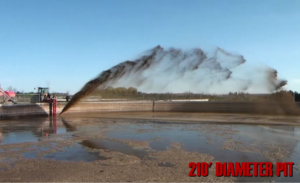Used with the permission of Iowa Pork Producer Magazine
Eldon McAfee, IPPA legal counsel
- Make every attempt to get to know neighbors. Realistically assess the situation with neighbors before building or expaning an operation
- Listen to and sincerely respond to neighbor concerns — even if they seem unfounded or beyond the producer’s control at the time. Consider all reasonable suggestions to address the concerns.
- Meet with concerned neighbors to explain your operation. Participate in mediation if requested by neighbors. Never give up trying to resolve the situation.
- Be aware of and comply with — or better yet exceed — all legal requirements for the operation.
- Design and construct the operation to minimize its impact on neighbors. This includes locating as far from neighbors and public areas as possible, designing sites that are not visible to neighbors, and utilizing the latest design technology to minimize odor (e.g., tree shelter belts and biofilters). Work with advisors, such as a manure management specialist, attorney or entomologist, to design and site your operation to minimize impact on neighbors.
- Stay current on new technologies and management practices to minimize odor, flies, etc. Attend meetings and seminars on these topics.
- Use best management practices, including keeping facilities as clean as possible, making sure manure storage structures are being operated according to current industry standards, and using products that reduce odor and flies in buildings and manure storage.
- Direct inject or incorporate manure within a short period of time following application. If manure must be applied and soil conditions will not allow injection or incorporation, contact neighbors beforehand and let them know your dilemma and why you can’t inject or incorporate this time.
- Avoid applying manure near neighbors, if possible. Notify neighbors prior to applying manure and offer to postpone application if neighbors have special activities planned.
- Apply manure when wind, temperature and other weather conditions are less likely to cause odor to reach neighbors.
- Apply manure as few times as possible throughout the year. This is a major advantage for newer confinement operations that have enough storage capacity to allow manure to be applied once each year.
- Avoid manure on roads and, as much as possible, avoid leaving mud, etc. on roads. If neighbors live on gravel roads, offer to pay for application of products to keep dust down.
- If more land is needed for manure application, consider offering the manure to neighboring farmers.
- Although many producers are not interested in owning residential property, consider purchasing acreages that are for sale near your operation. The residence can either be rented out or re-sold with a deed restriction establishing a nuisance easement or covenant.
- Require all manure applicators, input suppliers, livestock haulers, etc. to follow good neighbor practices. Most are more than willing to pay careful attention to their activities if they know of your neighbor’s individual concerns. Inform employees about good neighbor practices and make sure they follow them.











